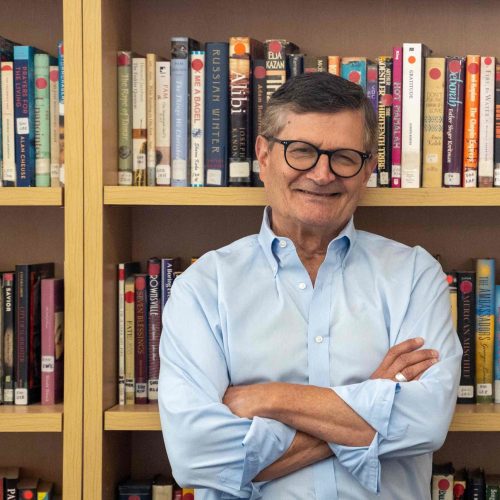Two thoughts.
This was my third time – three and a half, if I count the tine my family drove from Los Angeles to Chicago for a cousin’s wedding – a trip my thirteen year-old, California-centric self had described as “going to the East.” Three and a half times back-and-forth across the continental United States, and I am still in awe of the vastness, the beauty and the spectacles it offers.
One of the takeaways is that this is a country of faith. Washington and Jefferson and Franklin and company may have been Deists (those who believe in human reason as a reliable method of solving social and political problems), but they were also social Christians, and the churches that sprang up centuries ago have their institutional descendants in every state and county today. In large cities and even more prominently in small towns, houses of worship are not just places of prayer; they’re gathering places, spaces that create, define and serve the community.
Along the route, we passed two iconic testaments to that faith. The “Cross at the Crossroads” in Effingham, Illinois reaches 198 feet, but its builders have to settle for the “second-largest cross” medal in the U.S. The First Place winner in this category goes to the Branson Cross (a quick drive from Effingham), which stands at 218 feet. They are both joltingly powerful symbols.
Let’s be clear: there is nothing wrong, nefarious or diabolical about demonstrations of faith. Whether and how such showings might constitute coercion (subtle or not-so-much) is a valid topic of conversation, but in and of itself, these monumental (and that’s the appropriate root) structures should not be seen negatively by those in other faith communities, or those who choose not to adhere to a religious community at all.
If anything, seeing them (from far, far away) prompted me to consider our own manifestations of our faith, our community, our values. Certainly, we have edifices (possibly an edifice complex) in the Jewish community. Synagogues, institutions, museums and of course schools – all important, all imposing in their own way, all built with love and commitment. At the same time that we would justifiably look upon them with a sense of communal pride, we know that what’s behind them – the values, the dedication to Torah and commandments and to Israel and to each other – those are supremely more important than the brick and mortar and glass and steel. I’ll get back to that.
Thought number two. A recent “special” (aren’t they all “special” now?) broadcast on a cable news network featured a journalist anchoring an in-depth look, ostensibly at antisemitism; in actuality – at least to me – it was a deep dive into Jewish identity. In a corner of one conversation, she relays how her son had asked for a magen David – a “Star of David.” My sense of this individual (from the screen, so I obviously don’t really know her) is that she neither wears her Judaism on her sleeve, nor does she shrink or hide that aspect of her identity. As a relatively public persona, her periodic casual references to her membership in The Tribe go out to millions.
She was a bit surprised at her son’s request, but (spoiler alert), he received his magen David, but only after he ended up schooling his mother (don’t you love when that happens?). Asked why he would want such a gift, he logically said that there are classmates who choose to wear a cross, as a symbol of their community, their faith, their pride; why shouldn’t he do the same, to represent his own sense of connectedness?
Touché, Mom.
Not to be outscored by her son, later this reporter expresses her own, personal (as opposed to her journalistic) opinion, that the only real, long-lasting way to address antisemitism is… (you guessed it) through education. I imagine that she meant the education of others, of the masses, of our elected representatives. True – all true – but I’ll add my own emphasis. It’s bedrock education of ourselves and of our children that will make all the difference. Whether they’ll have the necessary pride to wear a sweatshirt (OK, not in Arizona in August) with Hebrew writing or an Israeli flag; whether they’ll choose to wear a kipah, to maintain kashrut, to give tzedakkah to Jewish causes; whether they’ll have Jewish books (fiction, nonfiction, serious or “summer reading”) on their shelves or continue a lifelong pursuit of Jewish knowledge – it’s all about education. Not merely “learning” – but feeling, belonging, connecting. Education isn’t only about what goes on in a classroom or in even in the school hallways. It’s not about the days in school – it’s about all the days after graduation.
If we want our children – the builders and the keepers of our personal and our collective future – to stand proud, with love and knowledge and commitment, the answer is as obvious as it’s been for millennia: they go to the schools we build for them. For two thousand years, we survived against unimaginable odds, not because of an army or national boundaries or material resources. We survived – and thrived – because we always placed education first on our communal to-do list. The more things change, the more they remain the same.

